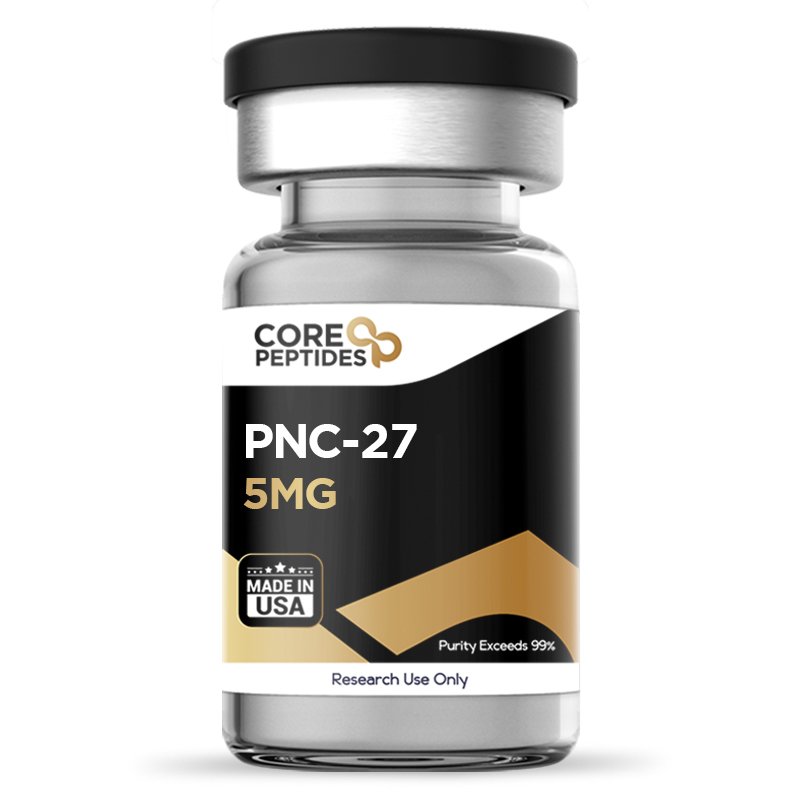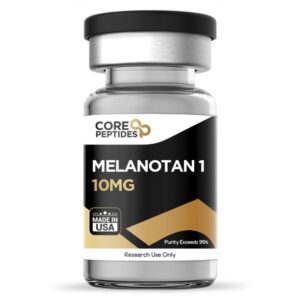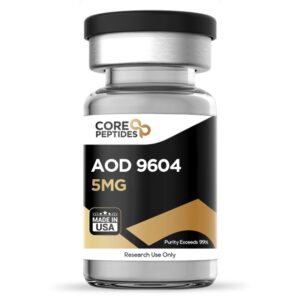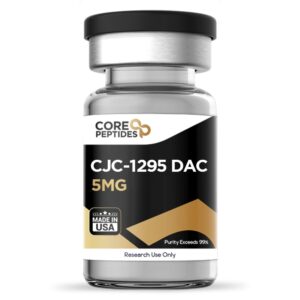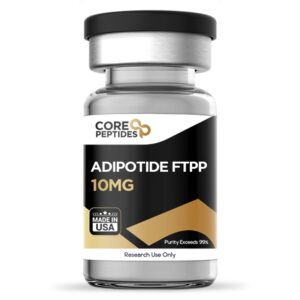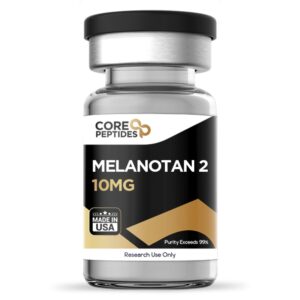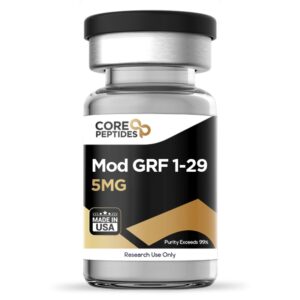PNC-27 (5mg)
$138.00
Size: 5mg
Contents: PNC-27
Form: Lyophilized powder
Purity: >99%
SKU: PNC-27
FREE Shipping on $200+ orders
Discount per Quantity
| Quantity | Discount | Price |
|---|---|---|
| 5 - 8 | 5% | $131.10 |
| 9 + | 10% | $124.20 |
PNC-27 Peptide
PNC-27 is a 27-amino acid peptide that has been studied for its potential to mitigate the activity and proliferation of cancer cells. It is derived from the third helix of the anti-cancer peptide α-helical segment of p53 (ASPP2), a protein involved in tumor suppression. PNC-27 has been suggested to induce cell death via necrosis in various cancer cell lines, including pancreatic cancer, ovarian cancer, and leukemia, among others.
Researchers speculate that the PNC-27 peptide may specifically target cancer cells while not appearing to interact with other cells. Initially synthesized in 2000 as a part of a research project associated with immunodeficiency, specifically HIV, this peptide was reported to exhibit the ability to bind with the double minute (HDM2) protein, which is deemed overly expressed on the membranes of the carcinogenic cells. Interestingly, PNC-27 does not appear to induce apoptosis, a common pathway for many anticancer research chemicals, but rather may act upon the cells via inducing necrosis. This mode of action suggests a direct, physical disruption of the plasma membrane, possibly mediated by the formation of pores that compromise cell integrity, leading to necrosis. More specifically, binding with this protein appears to perforate the membrane of cancer cells by forming holes and causing membranolysis. This allows for the influx of ions and the efflux of cellular contents, ultimately leading to cell death.(1)
Chemical Makeup(1)
Molecular Formula: C188H293N53O44S
Molecular Weight: 4031.7 g/mol
Research and Clinical Studies
PNC-27 Peptide and Selective Cell Death
In 2009, a study aimed to evaluate whether the PNC-27 peptide may interact (and potentially induce necrosis) within non-cancerous cells. The researchers at the time believed that, based on the peptide structure, it might be able to bind with HDM-2 protein and interact singly with cancerous cells. HDM-2 protein is reportedly only present in cancerous cells. The study suggests that forming a 1:1 complex between PNC-27 and HDM-2 might be a key event in initiating the potential formation of transmembrane pores. The study employed theoretical and experimental approaches to understand the pore formation's interaction and structural basis. Conformational energy calculations indicated that PNC-27 might form stable complexes with HDM-2, possibly aligning the leader sequence to not interfere with the core interaction. Yet, it did appear to participate in the pore structure. Immuno-electron microscopy gave researchers visual data of these complexes at the cancer cell surface, with observed ring-shaped structures at the pore sites, which they speculated may contain PNC-27 bound to HDM-2. Importantly, these pore structures were not observed in normal cells exposed to PNC-27, underscoring the peptide's potentially selective toxicity towards cancer cells. Further, for this study, normal cells were implanted with HDM-2 protein. The PNC-27 peptide, which otherwise might not affect the cells, now showed affinity towards the modified cells.(2)
PNC-27 Peptide and Lysis of Cancerous Cells
Another study(3) conducted in 2010 aimed at understanding whether fragments of the peptide or the entire peptide might impact the formation of membrane pores. The hypothesis was that if the peptide remained intact, it might more effectively induce the membranolytic activity necessary for killing cancer cells. For this study, the peptide was induced with a green fluorescence chemical to the terminal containing an amino group and a red fluorescence chemical to the terminal containing the carboxyl group. This labeling strategy was crucial as it allowed the researchers to visually track the integrity of the peptide within the cellular environment. The breast tumor and control cells were then exposed to the modified peptide to see which color appeared on the membrane during membranolysis. Half an hour after the peptide, a bright yellow luminescence was reported upon membrane lysis, suggesting that the peptide was fully intact during this cellular membrane-killing process. This observation was critical as it suggested that the peptide's structure was preserved during the interaction with the cell membrane, which would be essential for any cytotoxic activity. As expected, this was only seen in the cancerous cells while the control cells remained viable. The study's researchers suggest that the intact form of PNC-27 may be crucial for its activity, as the peptide appears to selectively induce pore formation in cancer cell membranes—a process associated with the release of lactate dehydrogenase (LDH), a marker of cell lysis. The interaction of PNC-27 with cancer cell membranes was suggested to increase over time, correlating with increased LDH release and cell death. Kelley A. Sookraj et al. stated,
"PNC-27 induces cancer cell membrane lysis by acting as the unmodified peptide, not fragments. The punctate yellow fluorescence is due to the interaction of PNC-27 with intramembrane targets of MCF-7 cells that do not exist in the membrane of the untransformed cell line. This interaction increases the lifetime of PNC-27. The absence of these targets in the membranes of the untransformed MCF-10-2A cells results in the initial uniform fluorescence of the double-labeled peptide in their membranes, after which the peptide is degraded." (3)
PNC-27 Peptide and Non-solid Tumor Cells
In 2014, another study(4) was initiated to determine the potential of the PNC-27 peptide on non-solid tissue tumor cells. As mentioned in the study, the purpose was “twofold: to investigate if these cells likewise express HDM-2 in their plasma membranes and to determine if our anti-cancer peptide induces tumor cell necrosis in these non-solid tissue tumor cells in a manner that depends on the interaction between the peptide and membrane-bound HDM-2.”(4)
The non-solid tumor cells were exposed to PNC-27, and the action examined. As part of the control, murine leukocyte cells were used. Upon macroscopic analysis, it was suggested that the HDM-2 cells were expressed in the non-solid tissue tumor cells and that the PNC-27 peptide appeared to exhibit potential selectivity towards these cells. Researcher Katlin Davitt et al. stated:
"... We conclude that the association of PNC-27 with HDM-2 in the cancer cell membrane [may] result in trans-membrane pore formation, which results in cancer cell death, as previously discovered in a number of different solid tissue tumor cells. Since K562 cells lack p53 expression, these effects of PNC-27 on this leukemia cell line [may] occur by a p53-independent pathway." (4)
PNC-27 Peptide and Cancer Cells
A study(5) was conducted on the peptide PNC-28, which is structurally and functionally very similar to the PNC-27 peptide. Both peptides are derived from p53 and appear to act only on the HDM-2 proteins in cancerous cells. In this study, the researchers evaluated the anti-tumor activity of PNC-28 against ovarian cancer cells and mouse xenograft models. They suggested that PNC-28 appeared to inhibit the growth of ovarian cancer cells and reduced tumor size in the mouse models.
In another 2020 study,(6) an experiment was conducted to determine the PNC-27 peptide potential on non-stem cells from the leukemia cell lines. Researchers reported the study focused on “acute myelogenous leukemia cell lines: U937, acute monocytic leukemia; OCI-AML3, acute myelomonocytic leukemia and HL60, acute promyelocytic leukemia.” These particular cell lines were selected due to their distinct phenotypic and genotypic characteristics, which might shed light on the peptide's varying potential across different cancer cell types. After peptide exposure, it was observed that the HDM-2 protein appeared to be highly expressed in all leukemia cells, which were all targeted by the PNC-27 peptide.(6)
PNC-27 peptide is available for research and laboratory purposes only. Please review and adhere to our Terms and Conditions before ordering.
References
- Davitt K, Babcock BD, Fenelus M, Poon CK, Sarkar A, Trivigno V, Zolkind PA, Matthew SM, Grin'kina N, Orynbayeva Z, Shaikh MF, Adler V, Michl J, Sarafraz-Yazdi E, Pincus MR, Bowne WB. The anti-cancer peptide, PNC-27, induces tumor cell necrosis of a poorly differentiated non-solid tissue human leukemia cell line that depends on expression of HDM-2 in the plasma membrane of these cells. Ann Clin Lab Sci. 2014 Summer;44(3):241-8. PMID: 25117093. https://pubmed.ncbi.nlm.nih.gov/25117093/
- Sarafraz-Yazdi E, Mumin S, Cheung D, Fridman D, Lin B, Wong L, Rosal R, Rudolph R, Frenkel M, Thadi A, Morano WF, Bowne WB, Pincus MR, Michl J. PNC-27, a Chimeric p53-Penetratin Peptide Binds to HDM-2 in a p53 Peptide-like Structure, Induces Selective Membrane-Pore Formation and Leads to Cancer Cell Lysis. Biomedicines. 2022; 10(5):945. https://doi.org/10.3390/biomedicines10050945
- Sookraj KA, Bowne WB, Adler V, Sarafraz-Yazdi E, Michl J, Pincus MR. The anti-cancer peptide, PNC-27, induces tumor cell lysis as the intact peptide. Cancer Chemother Pharmacol. 2010 Jul;66(2):325-31. doi: 10.1007/s00280-009-1166-7. Epub 2010 Feb 25. PMID: 20182728. https://pubmed.ncbi.nlm.nih.gov/20182728/
- Davitt K, Babcock BD, Fenelus M, Poon CK, Sarkar A, Trivigno V, Zolkind PA, Matthew SM, Grin'kina N, Orynbayeva Z, Shaikh MF, Adler V, Michl J, Sarafraz-Yazdi E, Pincus MR, Bowne WB. The anti-cancer peptide, PNC-27, induces tumor cell necrosis of a poorly differentiated non-solid tissue human leukemia cell line that depends on expression of HDM-2 in the plasma membrane of these cells. Ann Clin Lab Sci. 2014 Summer;44(3):241-8. PMID: 25117093. https://pubmed.ncbi.nlm.nih.gov/25117093/
- Wilbur B. Bowne et al., The Penetratin Sequence in the Anti-cancer PNC-28 Peptide Causes Tumor Cell Necrosis Rather Than Apoptosis of Human Pancreatic Cancer Cells, Annals of Surgical Oncology 15(12):3588–3600 Published by Springer Science+Business Media, LLC 2008 The Society of Surgical Oncology, Inc. DOI: 10.1245/s10434-008-0147-0. https://webs.iiitd.edu.in/raghava/cancerppd/refpdf/18931881.pdf
- Anusha Thadi et al, Targeting Membrane HDM-2 by PNC-27 Induces Necrosis in Leukemia Cells But Not in Normal Hematopoietic Cells, Anticancer Research 40 (9):4857-4867, September 2020 https://www.researchgate.net/publication/344117616
